Classic French Fruit Tart
- By Jennifer Segal
- Updated December 11, 2025
- 132 Comments
- Leave a Review

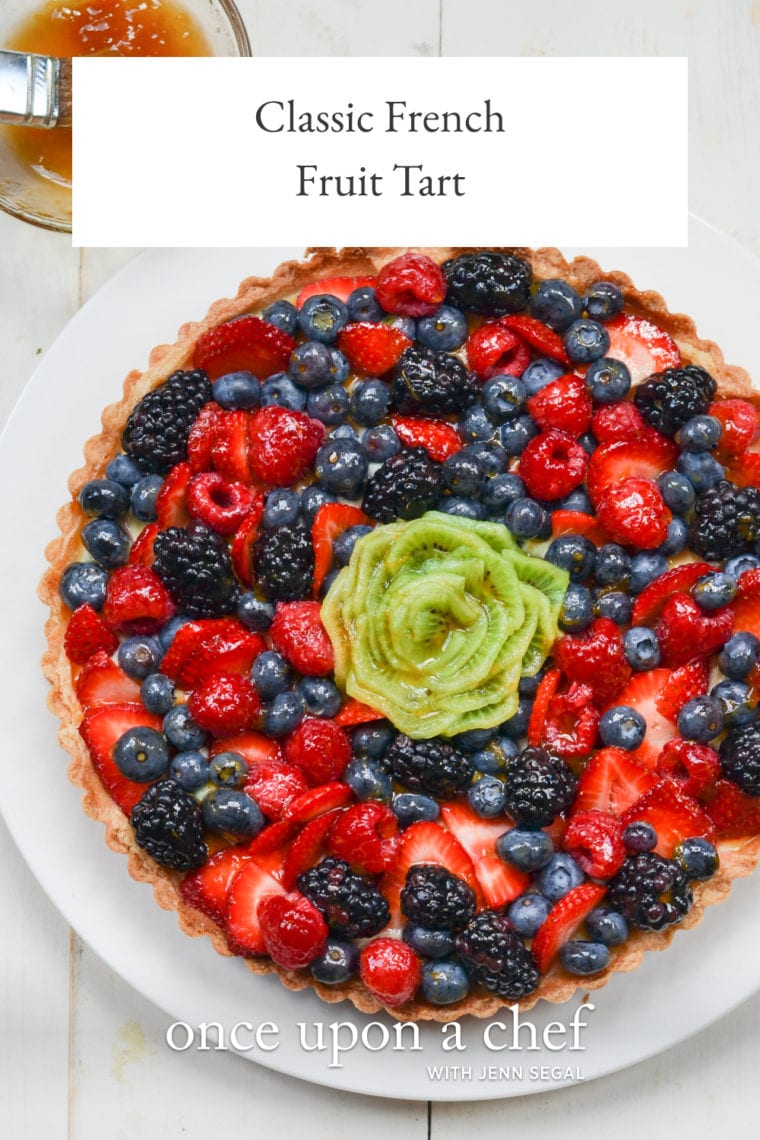
This post may contain affiliate links. Read my full disclosure policy.
Whip up a French fruit tart that could dazzle in the window of a fancy bakery—with its buttery shortbread crust, luscious vanilla custard, and a vibrant mix of fresh fruits, it’s a simple yet elegant treat for any occasion.
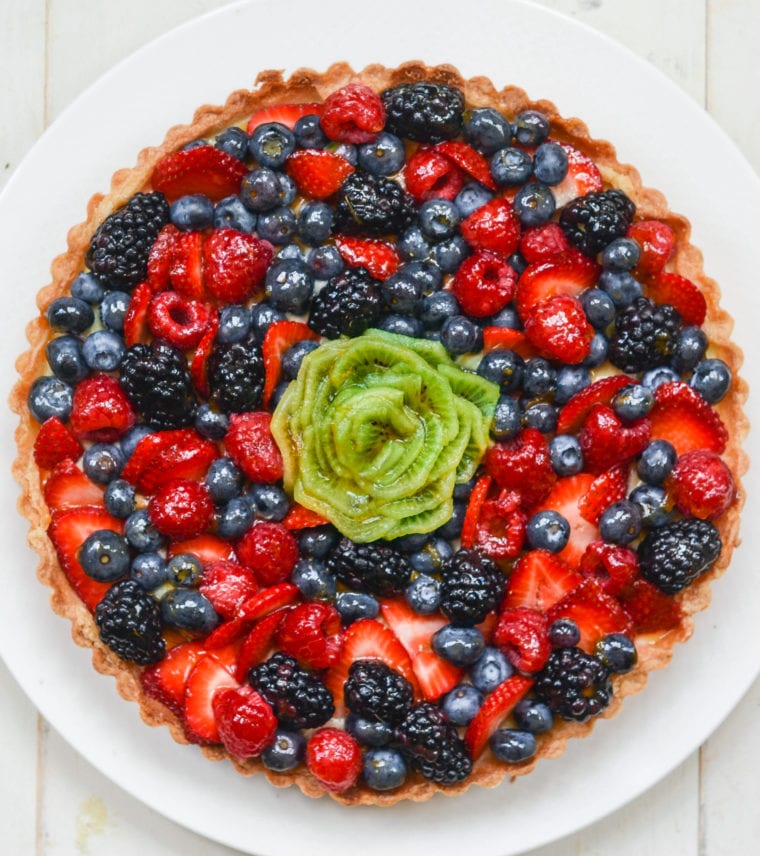
This classic French fruit tart combines three equally delicious elements: a crisp, buttery shortbread crust (or pâte sucrée), vanilla pastry cream (or crême pâtissière), and heaps of fresh fruit. The recipe comes from my friend Lisa Kolb Ruland, the pastry chef behind the beautiful and inspiring blog Unpeeled. The fruit tart comes together easily but looks like it came straight out of a French pâtisserie window, and it tastes even better than it looks.
You’ll need a 9.5 x 1-inch fluted tart pan with a removable bottom for this recipe. These pans can be ordered online or found in any kitchen store (my local hardware store even carries them in their kitchenware section). Decorating the tart is the fun part. You can do a more traditional French design of carefully arranged fruit (see below), a more free-form fruit pattern, or a mix, like the one shown above. Just have fun with it—as long as you use ample fruit, it will look gorgeous!
“This was wonderful—and surprisingly easy to make for such an elegant dessert!”
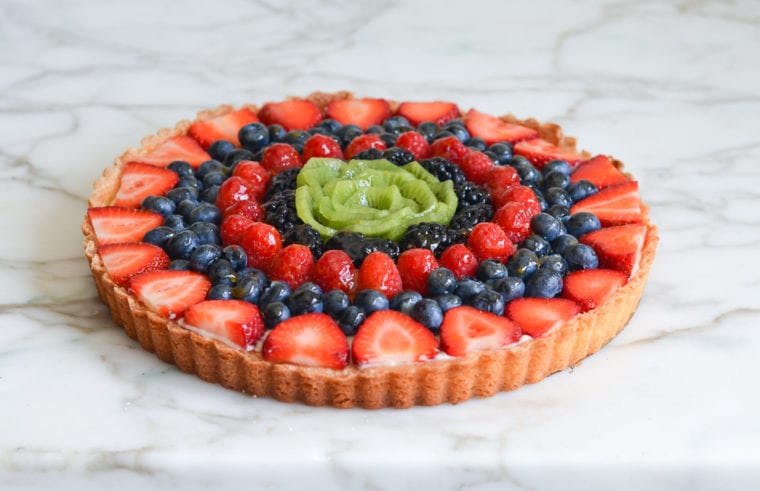
What You’ll Need To Make A Classic French Fruit Tart
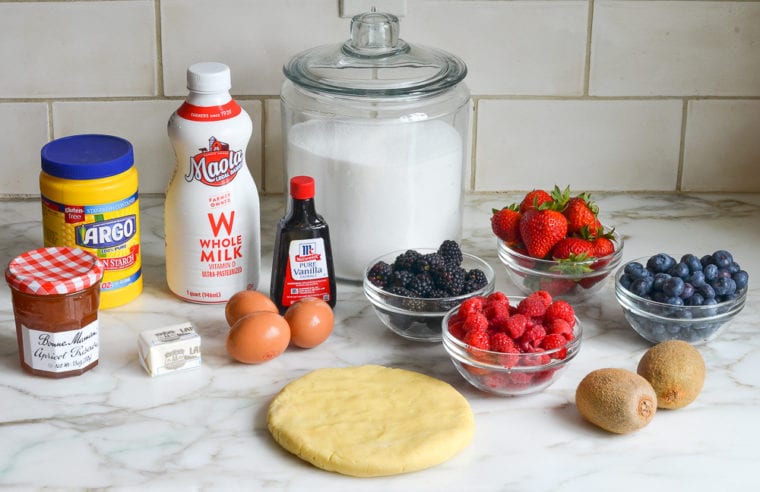
Before we get to the step-by-step instructions, a quick word about the fruit. Fresh berries are a top choice for a French fruit tart. They look pretty and colorful, and they generally stay perky longer than cut fruit. If you’d like to add a pop of additional color, mango and kiwi slices are good options, as they will not oxidize and turn brown (avoid sliced apples and bananas for this reason). It’s best to also avoid melon and other fruit with high moisture content, like sliced citrus, as these fruits will wilt quickly and seep moisture into the pastry cream.
Step-by-Step Instructions
Step 1: Prepare the Crust
Prepare the pâte sucrée recipe through baking and cooling. A pâte sucrée is a crisp yet tender pastry crust that is slightly sweet. (In French, pâte means dough and sucrée means sweet.) The dough maintains its shortbread-like texture even when chilled, which makes it ideal for tarts that require refrigeration.
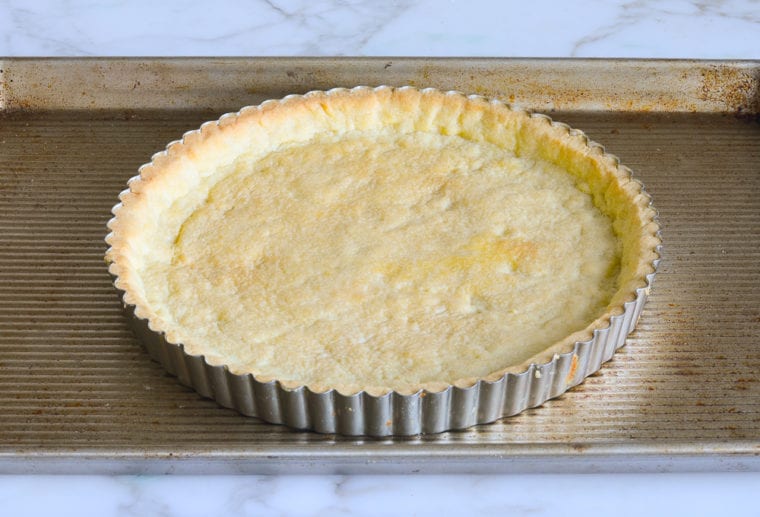
Step 2: Make the Pastry Cream
Pastry cream, or crême pâtissière, is a sweet, vanilla pudding-like custard that is used in many desserts, like cream puffs, éclairs, and fruit tarts. To make it, begin by heating the milk in a medium pot until just boiling. Remove the pot from heat.
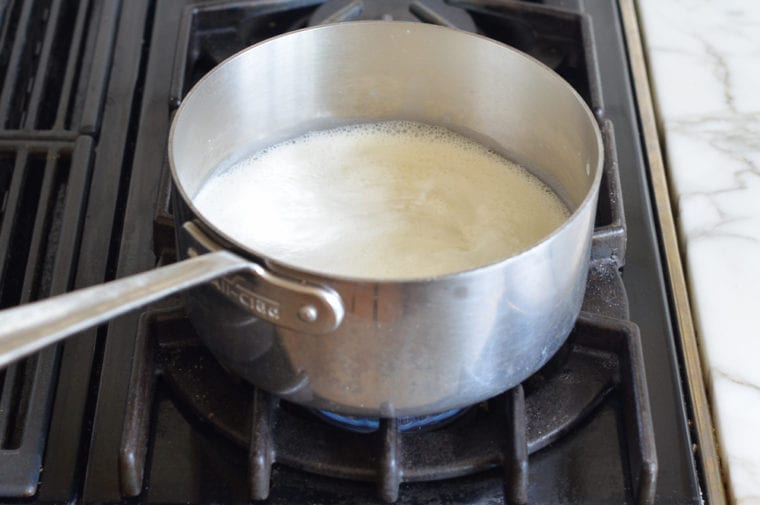
Add the sugar, egg, egg yolks, and cornstarch to a heat-proof mixing bowl.
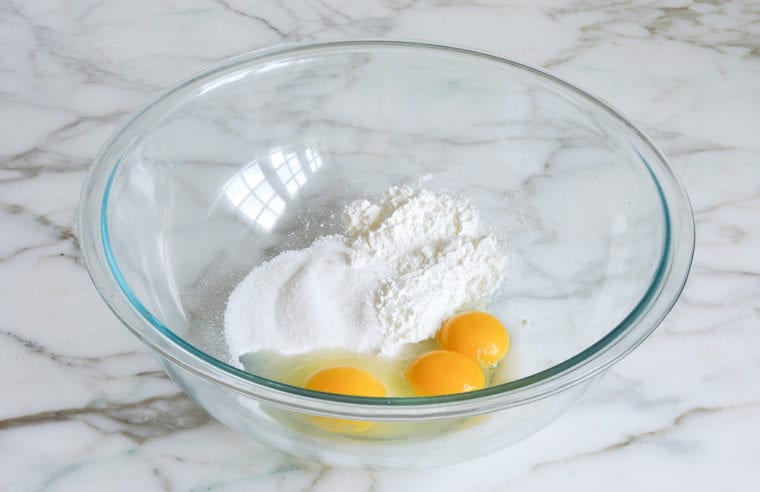
Whisk until the mixture is very smooth and has lightened in color, about 2 minutes.
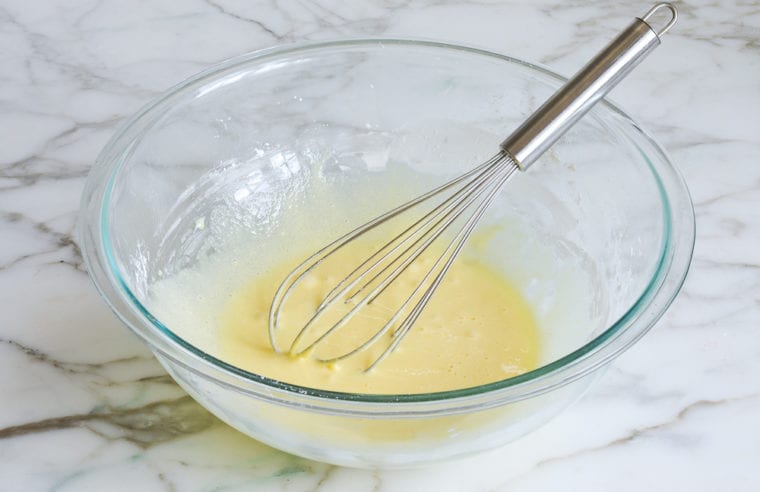
Whisking constantly, add about a quarter of the hot milk into the egg mixture.
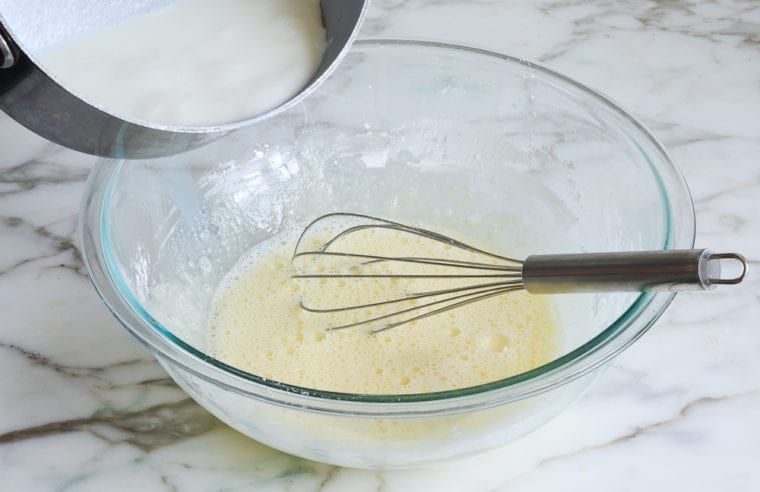
Pour the milk-tempered egg mixture into the pot of the remaining milk. Whisk to combine.
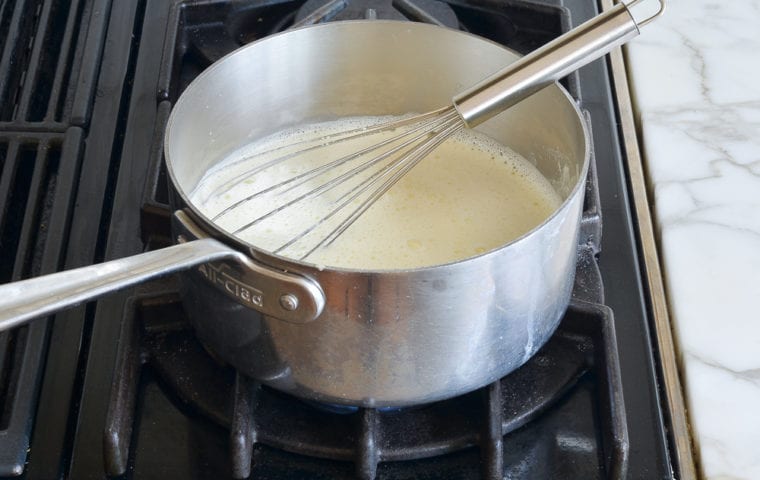
Return the pot to the heat and cook over medium heat, whisking constantly to prevent “scrambled eggs,” especially on the sides and bottom, until the pastry cream thickens, about 2 minutes. A flat whisk is ideal for this task. Stir in the butter and vanilla.
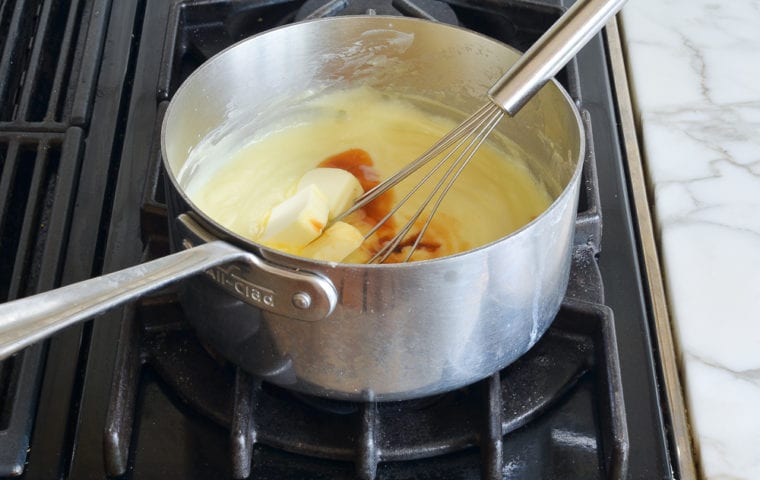
Cook one minute more, whisking constantly. The pastry cream should make thick, lazy bubbles.
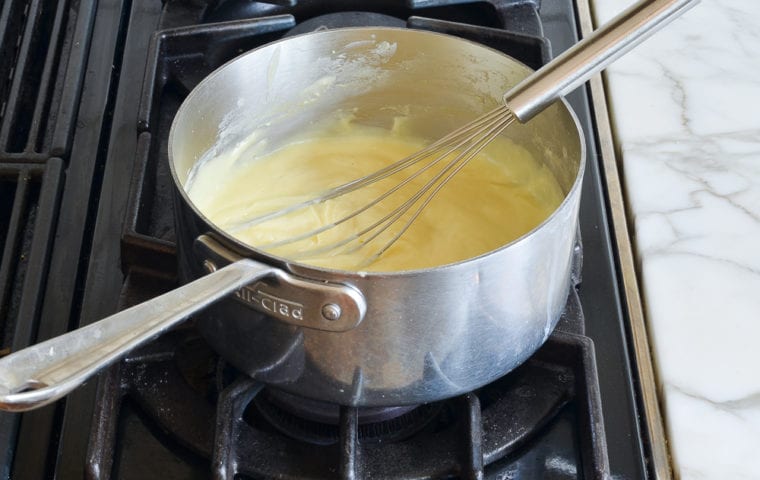
Pour the thickened pastry cream into a clean, shallow bowl. Cover it with plastic wrap and push it down in the bowl so it sits directly on the surface of the pastry cream. This prevents a skin from forming on top. Chill until cold, a few hours or up to 2 days.
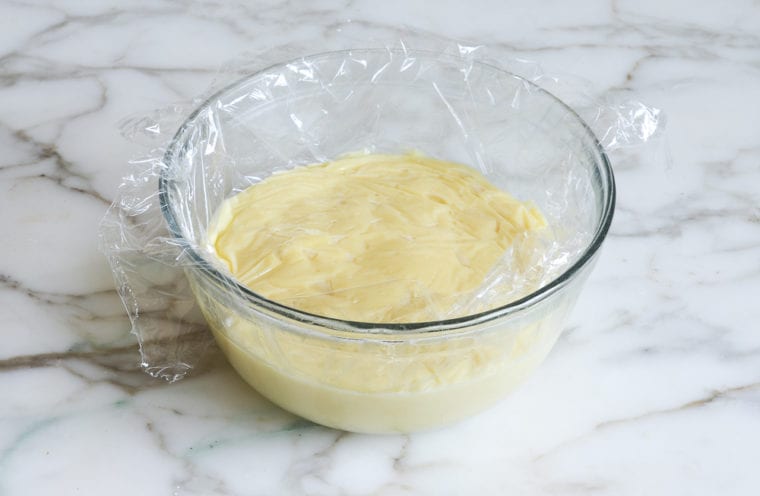
Step 3: Assemble the Fruit Tart
Remove the tart ring and transfer the tart shell to a serving platter. Whisk the chilled pastry cream until smooth, then spread it evenly into the tart shell using an offset spatula.
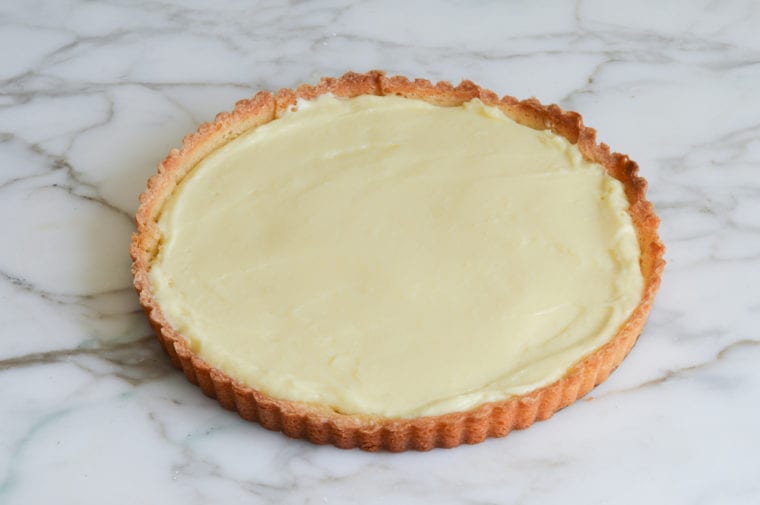
Arrange a generous amount of fruit over the pastry cream in your desired design. As mentioned above, you can do a more traditional French design of concentric circles of arranged fruit (see bottom of post for an example), a free-form fruit pattern, or a mix. Be sure to be generous with the fruit and cover the pastry cream completely.
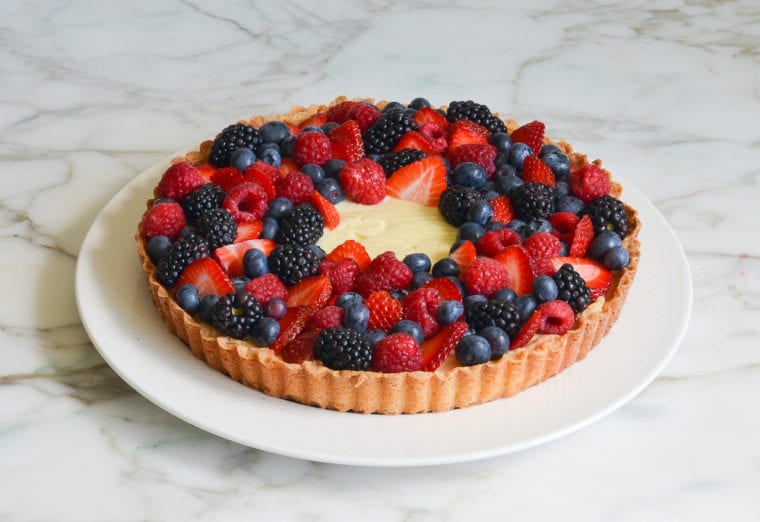
If you’d like to do a mango or kiwi slice rosette in the center, leave a space in the middle of the tart. Start from the outside and work your way to the center, overlapping each slice a little on top of the next.
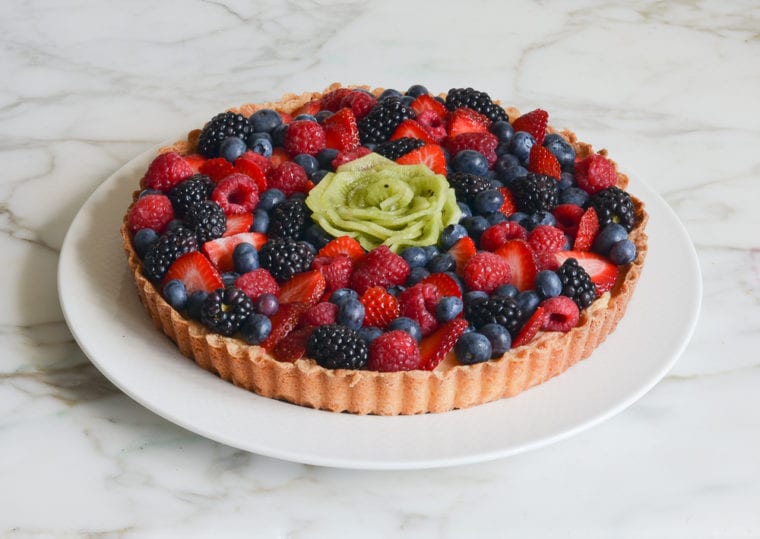
Finally, heat the apricot jam with a tablespoon of water and dab it over the fruit. This glaze makes the fruit tart shine and also locks in the fruit’s freshness.
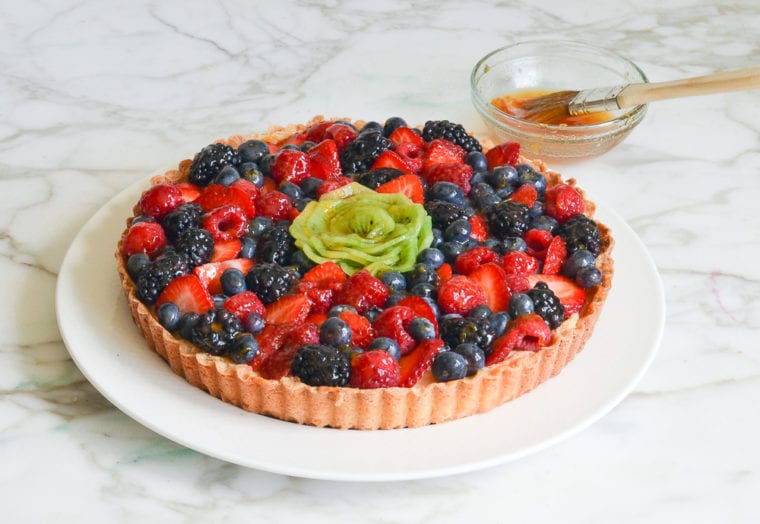
You May Also Like
Classic French Fruit Tart
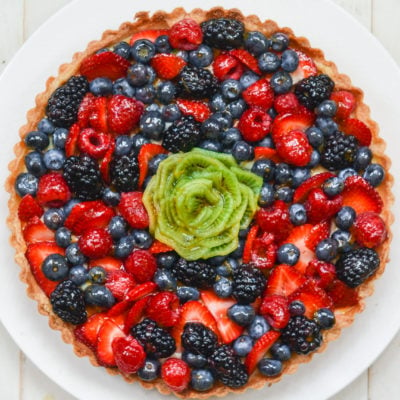
Ingredients
- 1 pâte sucrée (sweet tart dough)
- 2 cups whole milk (do not substitute low-fat or skim milk)
- ½ cup sugar
- 3 tablespoons cornstarch
- 1 large egg
- 2 large egg yolks
- 3 tablespoons unsalted butter, cut into pieces
- 2 teaspoons vanilla extract
- About 4 cups fresh mixed berries of choice, plus other fruits, such as sliced kiwi or mango (see note)
- ¼ cup apricot jam
Instructions
- Make the Crust: Complete the pâte sucrée through baking and cooling.
- Make the Pastry Cream: In a medium pot, heat the milk until just boiling. Remove the pot from heat. While the milk is warming, in a heat-proof mixing bowl, whisk together the sugar, egg, egg yolks, and cornstarch. Whisk until the mixture is very smooth and has lightened in color, about 2 minutes. Whisking constantly, add about a quarter of the hot milk into the egg mixture. (This is called tempering. Tempering the eggs helps raise their temperature without cooking them, and helps emulsify them into the milk.) Pour the milk-tempered egg mixture into the pot of the remaining milk. Whisk to combine. Return the pot to the heat and cook over medium heat, whisking constantly to prevent “scrambled eggs,” especially on the sides and bottom, until the magic happens and the pastry cream thickens, about 2 minutes. Stir in the butter and vanilla and cook one minute more, whisking constantly. The pastry cream should make thick, lazy bubbles. (See note below if you see any coagulated bits of egg in your custard.) Pour the thickened pastry cream into a clean, shallow bowl. Cover it with plastic wrap and push it down in the bowl so it sits directly on the surface of the pastry cream. This prevents a skin from forming on top. Chill until cold, a few hours (or up to 2 days before serving).
- Assemble the Tart: Remove the tart ring and transfer the tart shell to a serving platter. Whisk the chilled pastry cream until smooth, then spread it evenly into the tart shell using an offset spatula. Arrange a generous amount of fruit over the pastry cream in your desired design. In a small saucepan, heat the apricot jam with 1 tablespoon of water over medium heat, whisking, until thin. (Alternatively, heat it in a heat-proof bowl in the microwave for about 30 seconds.) If the jam is especially chunky, strain it through a sieve. Use a pastry brush to gently dab the fruit with a thin layer of apricot glaze. Chill until ready to serve.
Notes
- Avoid melon and other fruit with high moisture content, like sliced citrus. These will wilt quickly and seep moisture into the pastry cream. Also, avoid oxidizing fruit like apples and bananas; these fruits will turn brown. Berries should be fully dried after rinsing (raspberries should not be washed), and strawberries should be sliced.
- If you see any coagulated egg bits in your finished custard, strain the hot pastry cream through a fine mesh strainer.
- Make-Ahead Instructions: The pastry cream can be made up to 2 days before serving. The tart can be assembled and refrigerated up to one day before serving.
Nutrition Information
This website is written and produced for informational purposes only. I am not a certified nutritionist and the nutritional data on this site has not been evaluated or approved by a nutritionist or the Food and Drug Administration. Nutritional information is offered as a courtesy and should not be construed as a guarantee. The data is calculated through an online nutritional calculator, Edamam.com. Although I do my best to provide accurate nutritional information, these figures should be considered estimates only. Varying factors such as product types or brands purchased, natural fluctuations in fresh produce, and the way ingredients are processed change the effective nutritional information in any given recipe. Furthermore, different online calculators provide different results depending on their own nutrition fact sources and algorithms. To obtain the most accurate nutritional information in a given recipe, you should calculate the nutritional information with the actual ingredients used in your recipe, using your preferred nutrition calculator.
See more recipes:
Comments
Add a Comment Cancel reply
This site uses Akismet to reduce spam. Learn how your comment data is processed.
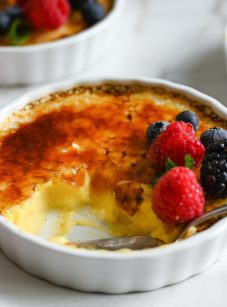
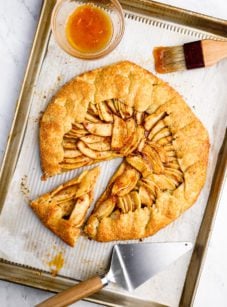
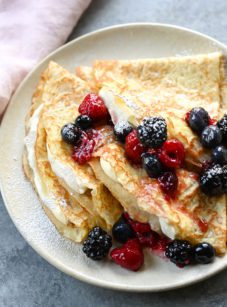
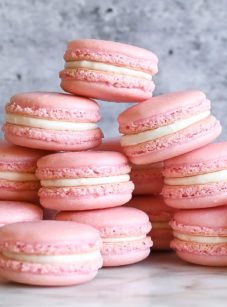
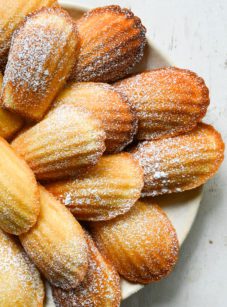
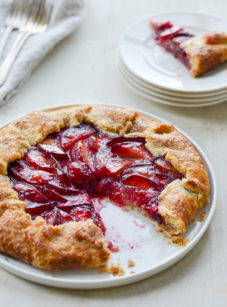
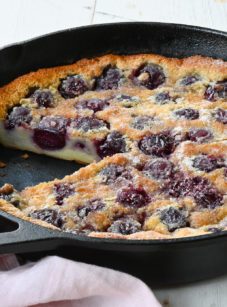
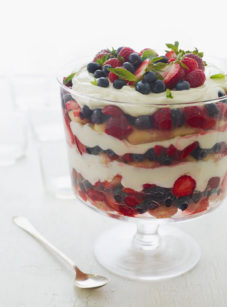
Thank you for another perfect recipe, Jenn! I still can’t believe I made this beautiful and delicious tart! I brought it to a Thanksgiving gathering and it was gone so fast and everyone raved about it. I’m so glad I took a photo, and I keep admiring it. It’s funny that people think I’m a fantastic chef but really it’s all because your recipes are excellent and you give really clear and detailed instructions. Thank you! 🙏🏽
I made this (and the pate sucree) using oat milk and vegan butter to make the entire recipe dairy-free. It worked beautifully! Thank you for the great recipe.
One of my guests is supposed to avoid foods high in potassium or phosphorus so the vanilla custard is a problem. How do you think this would taste with a lemon filling instead like a lemon mousse? If you think that would work, could you please suggest a recipe? Thanks for all your amazing recipes!
Hi Laurie, I haven’t tried it, but I think it should work. Please LMK how it comes out if you make it that way!
I’m planning to use the lemon bar filling but just realized that gets baked into the crust. Can I bake that using the pate sucree crust baking both at the same time? If so, 25 minutes (the time indicated for pate sucree) or 35 minutes (the time indicated for lemon filling? Or is there another way to use that lemon bar filling in this tart? Unfortunately that was the only recipe that wasn’t high potassium or high phosphorus. Thanks!
Hi Laurie, I do think that would work – I’d go with 35 min. Hope that helps!
Thanks, Jenn, it was a success. I blind-baked the crust for 12-13 minutes then let it cool for 10 minutes. Turned the oven down to 325, added the lemon filling and baked for 20 minutes. It was a long way from done so I increased temp to 350 and baked another 15 minutes. Flavor was a tad tart so if I used a lemon filling again, I’d probably replace the apricot jam glaze with a cornstarch/powdered sugar clear glaze. It was delicious, beautiful and easy!
Thanks for the follow up – glad to hear it came out well and that you also have some tips for tweaks for the next time. 😊